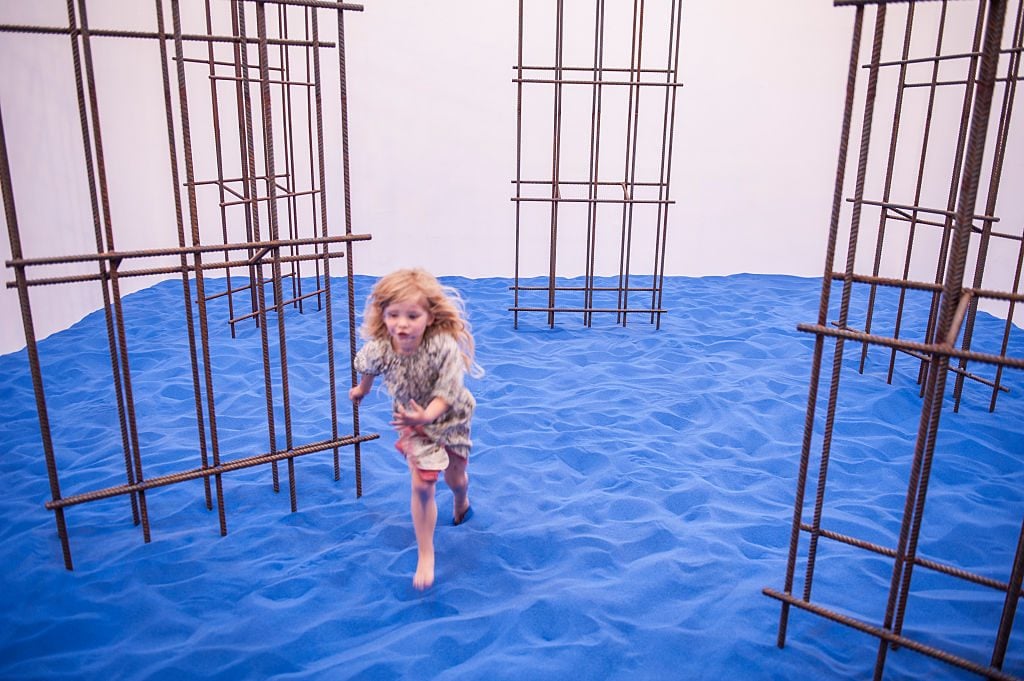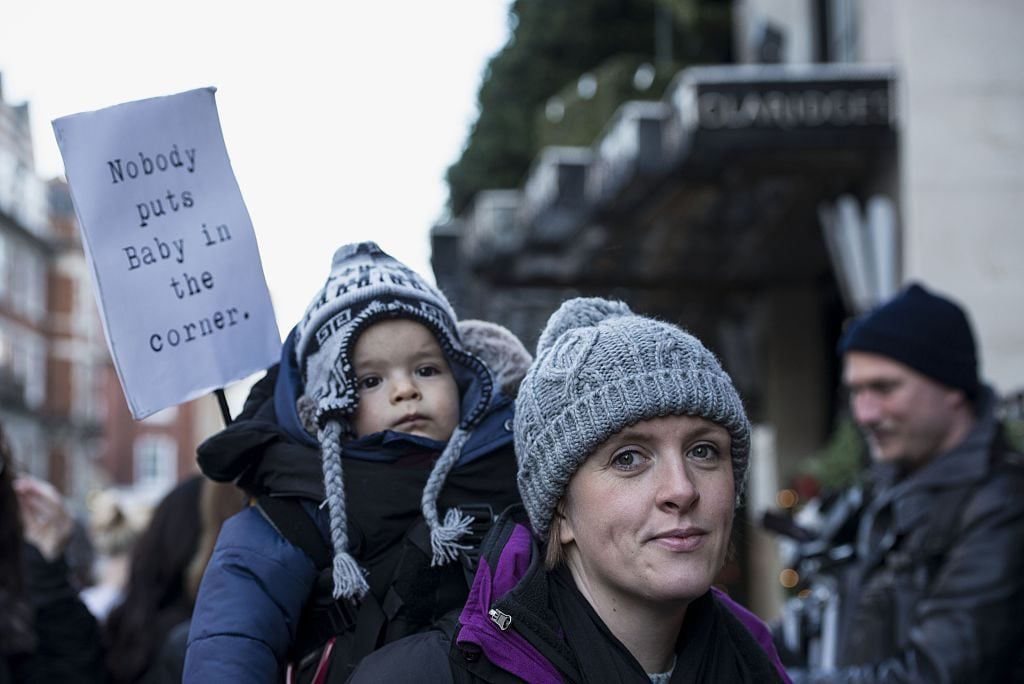Art World
Museums and Galleries Have Long Failed to Meet the Needs of Artist Mothers. These Guidelines Could Change That
The project, initiated by writer Hettie Judah, has garnered widespread international attention.

The project, initiated by writer Hettie Judah, has garnered widespread international attention.

Naomi Rea

A new set of guidelines introduced by members of the art world hoping to make it a more hospitable place for mothers and fathers asks institutions to take into account the needs of working parents.
The guidelines, officially titled “How Not to Exclude Artist Parents,” have been spearheaded by writer Hettie Judah in response to the Freelands Foundation’s annual report on the representation of female artists in Britain.
“Artists are commonly expected to take part in talks, press interviews, and write texts on top of the quite often poorly paid exhibition fee,” Judah said. That often hits mothers particularly hard.
After looking at how the foundation’s annual report tracked gender balance across artists’ careers, Judah noticed that the data began to skew away from gender parity and in favor of male artists somewhere between graduation from art school and gaining commercial representation. Something was derailing women’s careers in their late 20s and early 30s, and there was one variable that hadn’t been explored as an explanation: motherhood.
“I realized that none of these wonderful reports bring into play the question of the impact that motherhood has on artists’ careers,” Judah said. “So [the lack of representation] may not just be a question of structural sexism. It may be a question of how structural sexism intersects with motherhood as an additional issue.”

Scene from a pro-breastfeeding protest in London in 2014. Photo by Niklas Halle’n/AFP via Getty Images.
Judah undertook her own research at the beginning of lockdown, interviewing around 50 artists about their experiences being mothers in the art world.
She found that most artists felt pressure to hide their status as parents when dealing with institutions and residency programs, and many feared they would lose opportunities if they “admitted” to being mothers.
“They felt there was a presumption they wouldn’t be up to it, that they wouldn’t have the time, and that it would be difficult for everyone involved,” Judah said. The Freelands Foundation commissioned Judah to write an essay on her findings, which was published as part of its final report.
But Judah wanted to take additional steps to begin solving the problem. So she invited around 30 artist mothers to help hone a series of guidelines over a period of a few months, and presented the final set during an online talk with the Freelands Foundation. (Following these conversations, the remit was expanded to include artist parents rather than solely mothers.)
Judah has since gotten messages from artists all over the globe, demonstrating that the issue resonates far beyond the British art world. The seismic shifts brought on by the pandemic may have made the guidelines resonate especially strongly.
“I think for all mothers, the pandemic has been a tremendously testing time because if you’re involved in any kind of work, not just creative work, the responsibility of homeschooling and home care has overwhelmingly fallen to women,” Judah said. “That means whatever they’re engaged in, they’ve had less time and headspace to make work.”
Groups and individuals have since translated the guidelines into 10 languages, and there is evidence that some in the art world—including curator Nicoletta Lambertucci from the Box in Plymouth, who helped translate them into Italian, and a French Ministry of Culture consultant who inquired about reproducing them—have taken notice.
“It’s been, in a way, quite depressing seeing how much a chord they have struck,” Judah said. “But on the other hand, it’d be really wonderful to think they might start a conversation about how we can make things better.”
Judah is now building a database of several hundred artist-parent organizations, including commissioning bodies like the London-based ProCreate Projects, which awards the Mother Art Prize, as a networking tool.
“There are actually an enormous number of such organizations around the world, but there isn’t an easy way to find them,” Judah said. She is currently seeking funding to expand the scope of the database into a community-edited network.
See the full guidelines, titled How Not to Exclude Artist Parents, below.
Be breastfeeding friendly; stay in contact with artists when they become parents. The art does not need to be family friendly, but the institution should be.
It shouldn’t be left to the artist to have to “confess” to being a parent, or to fear they may lose a show, commission or residency if they do so.
Don’t make urgent last-minute requests for texts, talks, and other extras.
Discuss childcare costs upfront with the artist and be clear about what you can and can’t cover. Allow artists to invoice for that portion of their fee that they will need to spend on childcare as a direct cost so that they won’t be taxed for it as income.
Consider options such as weekend daytime private views rather than sticking rigidly to early evenings when children need to be fed, bathed, and put to bed.
Offer artists who need to travel with children the option of installing a show over half term, for example.
This may involve allowing the artist to split the residency period into more manageable sections, or supporting them through a research and development period in their own studio if they can’t travel.
Artists’ careers come in many shapes, and are paused for many reasons, parenting among them. Emerging artists are not always those who graduated most recently.